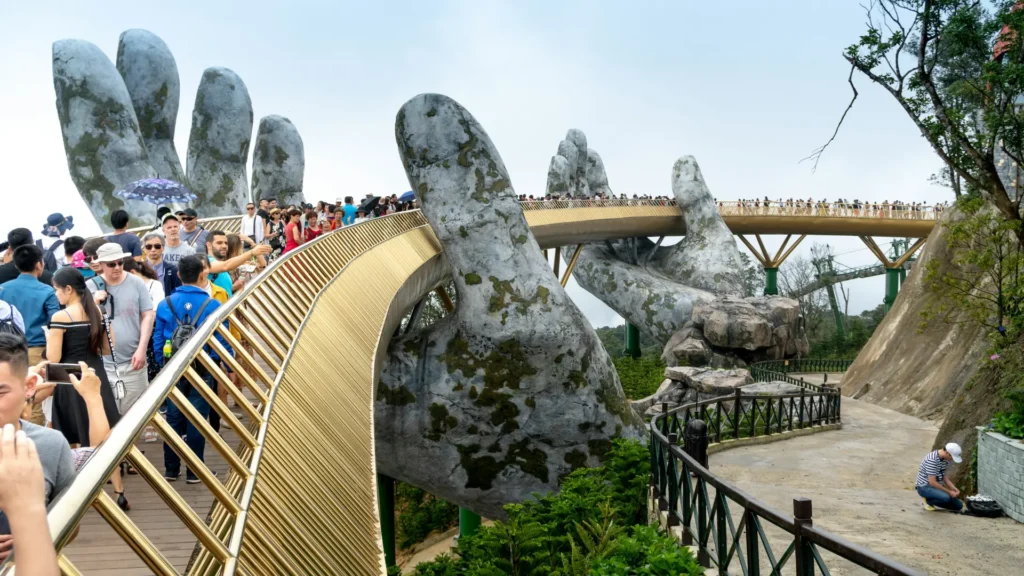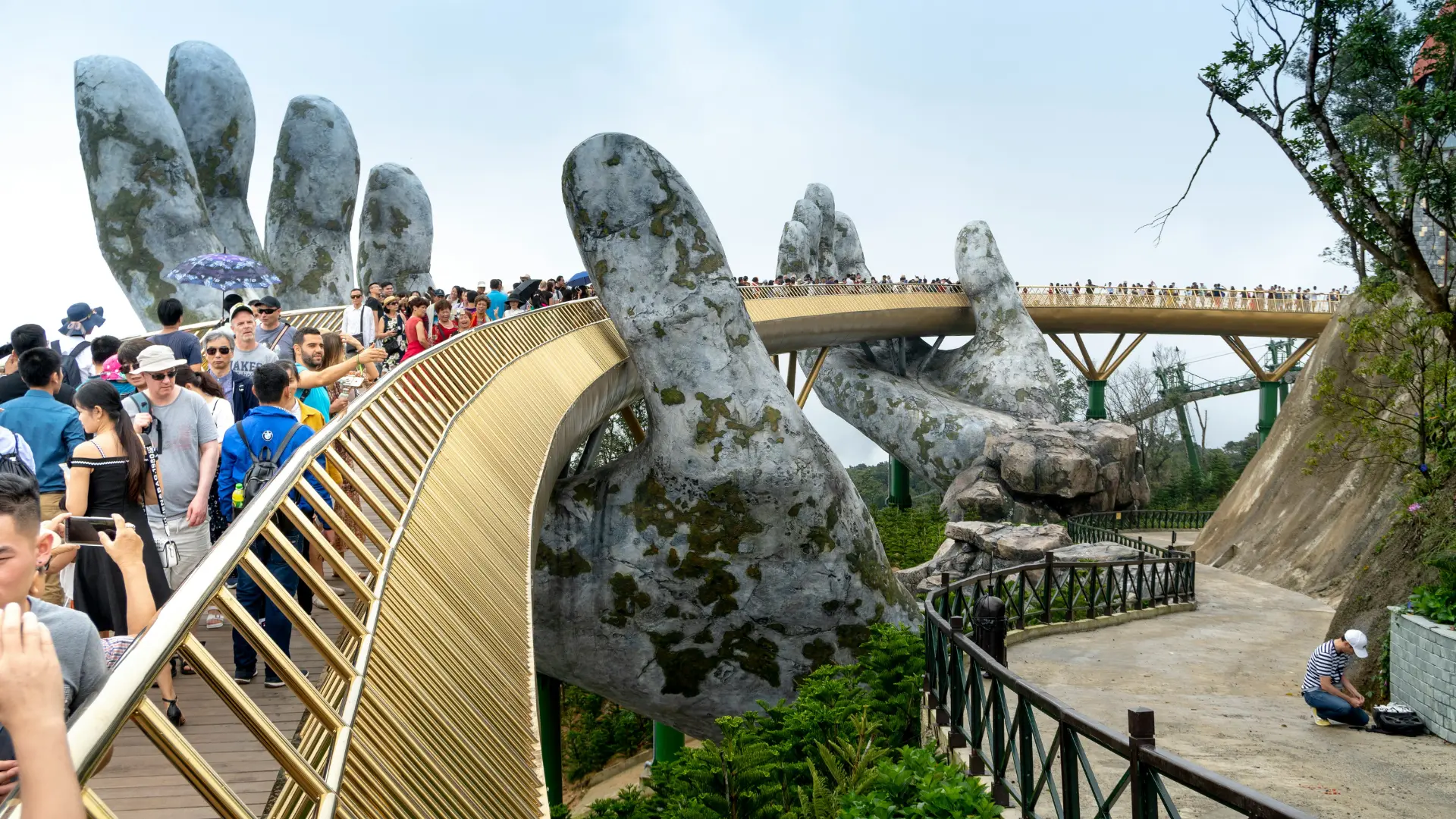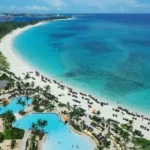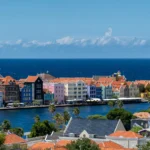Imagine stepping into Vietnam and finding yourself standing on the edge of a rice terrace in Sapa, where golden fields shimmer under the autumn sun. Or picture walking through Hoi An’s lantern-lit streets on a cool evening, the river glowing with floating lights. These moments feel almost magical — yet they depend heavily on when you decide to visit.
Planning your trip at the best time to travel to Vietnam can mean the difference between clear skies and heavy rains, peaceful strolls and crowded streets, or a budget-friendly escape versus overspending during peak demand. Vietnam is stunning all year, but every season paints the country in a different shade, offering unique experiences that can transform your journey.
In this guide, you’ll uncover the best time to travel to Vietnam, broken down by seasons, regions, and festivals, with insights into when to save money and when to splurge. Whether you crave adventure in the mountains, relaxation on golden beaches, or immersion in cultural festivals, this guide will help you align your trip with your travel dreams.

Table of Contents
Understanding Vietnam’s Climate and Seasons
Vietnam stretches over 1,600 kilometers from north to south, which means the climate changes dramatically depending on where you go. Before choosing the best time to travel to Vietnam, it’s important to understand how seasons shape each region.
Vietnam’s Three Distinct Regions
- North Vietnam (Hanoi, Ha Long Bay, Sapa): Four seasons with hot, humid summers and cool, dry winters.
- Central Vietnam (Hue, Da Nang, Hoi An): Tropical with long, sunny summers but vulnerable to typhoons in autumn.
- South Vietnam (Ho Chi Minh City, Mekong Delta, Phu Quoc): Warm all year with two main seasons — dry and rainy.
Seasonal Overview at a Glance
| Region | Best Months | Weather Highlights | Challenges |
|---|---|---|---|
| North Vietnam | Oct–Apr | Cool, dry, perfect for trekking | Cold winters in Sapa |
| Central Vietnam | Feb–Aug | Sunny beaches, cultural events | Typhoons Sep–Nov |
| South Vietnam | Dec–Apr | Dry, warm, ideal for islands | Heavy rains May–Nov |
Best Time to Visit Vietnam by Season
Vietnam’s seasons bring diverse experiences. Knowing what to expect helps you pack wisely and avoid travel disappointments.
Spring (March – April)
- Mild weather with blooming flowers.
- Ideal for exploring Hanoi’s Old Quarter or cruising Ha Long Bay.
- Great time for photography with clear skies.
- Not too crowded, offering a comfortable balance.
Summer (May – August)
- Perfect for beach escapes in Da Nang, Nha Trang, and Hoi An.
- Affordable hotel deals due to off-peak travel.
- Expect hot and humid days, with possible afternoon downpours.
- Typhoon risk increases later in summer.
Autumn (September – November)
- Cooler temperatures with stunning landscapes in the north.
- Rice terraces in Sapa and Mu Cang Chai turn golden.
- Best time for trekking and cultural festivals.
- Fewer crowds compared to winter.
Winter (December – February)
- Cool and misty in the north — romantic but chilly.
- South Vietnam shines with sunny beaches and dry weather.
- Tet Festival brings vibrant celebrations but also higher prices.
- Great time for cultural immersion.
Best Time to Travel to Vietnam for Festivals
Vietnam’s culture shines through its festivals, and timing your trip to match them can turn your journey into something extraordinary.
Tet (Vietnamese Lunar New Year, Jan/Feb)
- The biggest celebration of the year.
- Expect decorated streets, family gatherings, and cultural shows.
- Prices increase, and some shops may close, but the energy is unmatched.
Mid-Autumn Festival (September)
- Lantern displays, dragon dances, and mooncakes.
- Especially magical in Hoi An and Hanoi.
Hue Festival (Every two years, April/May)
- Traditional performances, royal court music, parades.
- A cultural highlight for history lovers.
Hoi An Lantern Festival (Monthly, on the full moon)
- Magical river scenes with floating lanterns.
- A serene yet lively experience you won’t forget.
Budget-Friendly Travel Seasons in Vietnam
Your wallet feels the seasons too. Vietnam’s prices shift with demand, so choosing the right season can make your trip far more affordable.
Peak Season (Dec–April)
- Best weather, but also the priciest.
- Crowds fill popular spots.
Shoulder Season (May & Sept–Nov)
- Balanced weather and moderate prices.
- Fewer tourists, making it easier to explore.
Off-Peak Season (June–August)
- Lowest prices for flights and hotels.
- Hot and rainy, but perfect for budget-conscious travelers.
Price Comparison Table
| Season | Airfare | Hotels | Daily Expenses | Crowds | Value |
|---|---|---|---|---|---|
| Peak (Dec–Apr) | $800 – $1,200 | $50 – $100 | $40 – $70 | High | Best weather but expensive |
| Shoulder (May & Sep–Nov) | $600 – $900 | $35 – $70 | $30 – $50 | Medium | Good balance of price & comfort |
| Off-Peak (Jun–Aug) | $500 – $800 | $25 – $50 | $25 – $40 | Low | Cheapest option, but hot & rainy |
Regional Breakdown – Where to Go and When
Vietnam’s regions vary so much that your experience depends on location as much as timing.
North Vietnam (Hanoi, Ha Long, Sapa)
- Best: Oct–Apr for cool trekking and sightseeing.
- Avoid: Heavy rains in summer.
Central Vietnam (Hoi An, Da Nang, Hue)
- Best: Feb–Aug with sunny, beach-friendly weather.
- Avoid: Sep–Nov due to typhoons.
South Vietnam (Ho Chi Minh, Mekong Delta, Phu Quoc)
- Best: Dec–Apr for dry, sunny days.
- Avoid: May–Nov rainy season.
Tips for Choosing Your Best Time to Travel to Vietnam
Your perfect season depends on your travel goals.
- For beach relaxation: Summer in central and southern Vietnam.
- For cultural exploration: Time your trip with Tet or the Mid-Autumn Festival.
- For adventure and trekking: Autumn in northern mountains.
Key Considerations
- Weather tolerance (can you handle humidity or cold?).
- Budget flexibility (off-season deals vs peak-season comfort).
- Interest in local events (do you want to join festivals or avoid the crowds?).
Conclusion:
Choosing the best time to travel to Vietnam is about aligning your journey with what excites you most. If you crave sunshine and beaches, aim for central Vietnam’s summer. For trekking and photography, autumn in the north is unmatched. To experience vibrant culture, time your trip around Tet or lantern festivals.
Vietnam rewards every traveler differently depending on the season, and when you choose wisely, your adventure becomes not just a trip — but a memory that lasts forever.
FAQ : about the Best Time to Travel to Vietnam
What is the best month to travel to Vietnam?
March, April, and October are often considered the most balanced months with mild weather across most regions.
Is Vietnam better to visit in winter or summer?
Winter is better for southern beaches and cultural events, while summer offers budget deals and sunny central coastlines.
Which part of Vietnam has the best weather?
Central Vietnam (Feb–Aug) has some of the best beach weather, while the north shines in autumn.
When is the cheapest time to travel to Vietnam?
June–August is the most affordable due to hot weather and rainfall.
Can you travel Vietnam during the rainy season?
Yes, but expect sudden showers. The advantage is lush landscapes, fewer tourists, and lower prices.








Leave a Reply